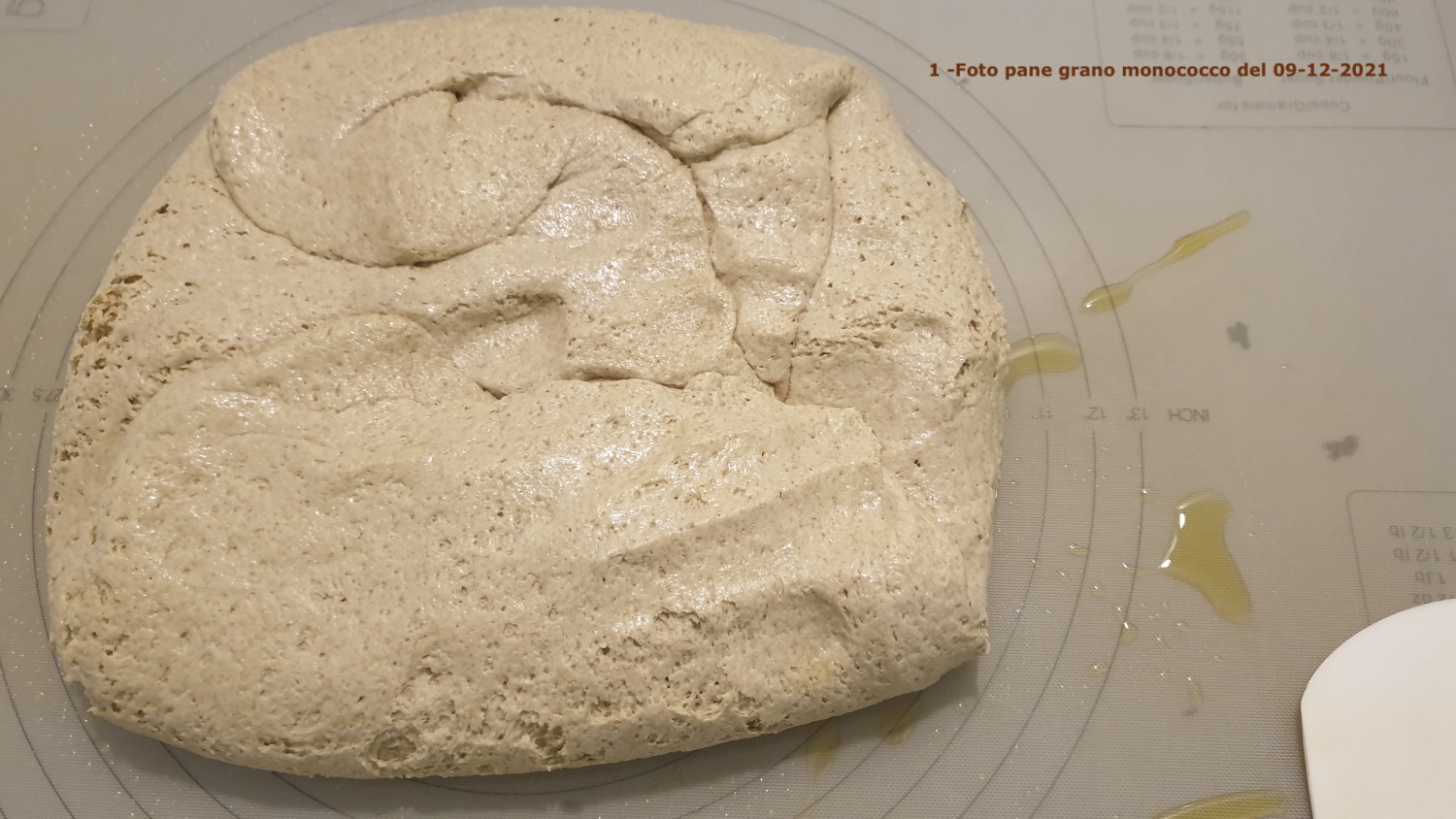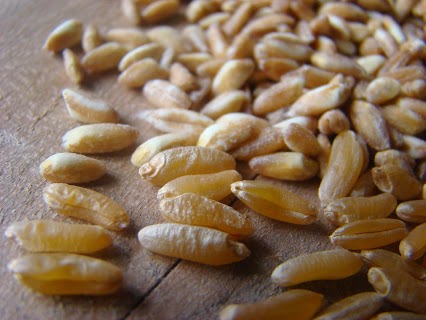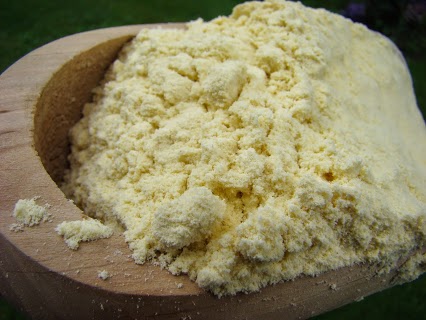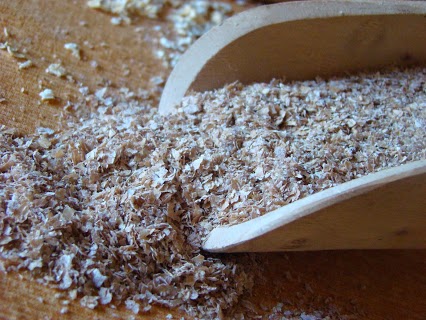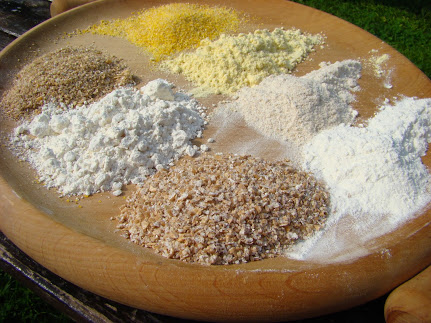Gliadina e Glutenina
Gliadina e Glutenina sono le proteine del grano responsabili della formazione del glutine e sono composte da lunghe catene di aminoacidi chiamate peptidi (1).
Digestione della gliadina e glutenina
L’intestino tenue è in grado di assimilare, attraverso l’epitelio intestinale, solo i singoli aminoacidi o piccole frazioni di peptidi con pochissimi aminoacidi (2). Sono gli enzimi digestivi gastro-intestinali che riducono “spezzettano” i peptidi riducendoli i singoli aminoacidi o in piccoli frammenti (3; 4), i perptidi piu grandi, in individui sani, verranno eliminati con le feci. I frammenti più grandi raggiungono l’intestino e possono provocare un aumento delle infiammazioni intestinali o della permeabilità intestinale esistente. Alcune di queste frazioni sono anche responsabili dell’attivazione avversa del sistema immunitario provocando la celiachia in taluni soggetti (5).

Alcuni peptidi sono altamente resistenti, difficili da “spezzettare” (6) rendendo i prodotti realizzati con i grani che li contengono meno digeribili. I grani, però, non sono tutti uguali. Studi specifici sono stati fatti per identificare, in campioni di grani, quali “frazioni” permangono dopo la digestione (7; 8). La quantificazione quali-quantitativa permette di poter selezionale “grani” più digeribili.
Note:
1 – Una catena di più amminoacidi legati tra loro è indicata con il nome di peptide o polipeptide o di oligopeptide. Gli aminoacidi (o amminoacidi) sono l’unità strutturale primaria delle proteine. Gli aminoacidi sono in pratica i “mattoncini”che, uniti tra loro formano una lunga sequenza che dà origine ad una proteina.
2 –E’ comunemente accettato che il massimo numero assimilabile è pari a 8 aminoacidi.
3- La digestione della gliadina e della glutenina è legata alla lunghezza dei polipeptidi che le compongono, alla forza dei legami esistenti tra gli aminoacidi e tra i polipeptidi, alla sequenza/natura dei singoli aminoacidi.
4 – La digestione delle proteine comincia nello stomaco, dove l’acido cloridrico crea l’ambiente adatto per l’enzima pepsina che esegue i primi “tagli”. Il grosso del lavoro comincia però più avanti, nell’intestino. Il pancreas produce molti enzimi, il più importante dei quali è la tripsina, che riduce le catene proteiche in frammenti composti da un numero ridotto di amminoacidi. Poi, altri enzimi, sulla superficie delle cellule intestinali e all’interno delle cellule, operano ulteriore riduzione in frammenti piccolissimi o/e singoli aminoacidi che vengono assorbiti a partire dal duodeno per tutto il digiuno e l’ileo attraverso i villi intestinali per essere, poi assimilati per la sintesi di nuove proteine e non solo. Dopo essere stati assorbiti raggiungeranno il fegato dove possono:
4a – essere utilizzati come tali per svolgere funzioni particolari (intervengono nelle risposta immunitaria, nella sintesi di ormoni e vitamine, nella trasmissione degli impulsi nervosi, nella produzione di energia e come catalizzatori in moltissimi processi metabolici)
4b – partecipare alla sintesi proteica, un processo inverso a quello digestivo che ha lo scopo di fornire all’organismo i materiali per la crescita, il mantenimento e la ricostruzione delle strutture cellulari
4c – se presenti in eccesso vengono utilizzati a scopi energetici (gluconeogenesi) o convertiti in grasso di deposito.
5 – In alcune persone alcuni specifici frammenti provenienti principalmente dalle α-gliadine e secondariamente dalle HMW-GS innescano la celiachia (Gilissen et al., 2014). Questi frammenti, sono peptidi costituiti da una sequenza di nove amminoacidi che provengono dalle proteine ricche in prolina e glutammina (prolamine), che sono resistenti alla digestione (Bethune and Khosla, 2008). Queste frazioni sono, generalmente, anche le più resistenti alla digestione gastro-intestinale. Pertanto, è stato ipotizzato che le gliadine pur difficilmente idrolizzabili dagli enzimi gastro-enterici, rimangano immunologicamente inattive nella maggior parte delle persone [A].
6 – Altro fattore che influenza la digeribilità di queste proteine è costituita dalla tipologia degli aminoacidi costituenti: l’alto contenuto di prolina e glutamina rende queste proteine resistenti alla completa digestione nell’intestino tenue [B]. Un peptide noto per l’alta presenza di prolina e glutammina è quello denominato 33mer presente nei grani teneri, farro spelta e grani duri è particolarmente resistente alla digestione gastro-intestinale. Questa frazione, che tra l’altro, è quella che più attiva la risposta avversa del sistema immunitario, è presente in varia misura nei grani: da 90,9 a 602,6 μg / g di farina. Non è stata, invece, rilevata la sua presenza nel grano monococco e nel grano duro [C].
7 – Summary of the GD-resistant peptides identified at the end of the duodenal phase and counting of the peptides encrypting full length epitopes relevant for celiac disease (CD) and wheat allergy: see table 3 in A Comprehensive Peptidomic Approach to Characterize the Protein Profile of Selected Durum Wheat Genotypes: Implication for Coeliac Disease and Wheat Allergy. Rosa Pilolli, Gianfranco Mamone et al. 2019.
8 – Ancestral Wheat Types Release Fewer Celiac Disease Related T Cell Epitopes than Common Wheat upon Ex Vivo Human Gastrointestinal Digestion. Tora Asledottir, Gianluca Picariello, Gianfranco Mamone et al. 2020.
A – “Alimentary protein digestion followed by amino acid and peptide absorption in the small intestinal epithelium is considered an efficient process. Nevertheless, unabsorbed dietary proteins enter the human large intestine as a complex mixture of protein and peptides.53,63 The incomplete assimilation of some dietary proteins in the small intestine has been previously demonstrated, even with proteins that are known to be easily digested (e.g., egg protein).64,65 The high proline content of wheat gluten and related proteins renders these proteins resistant to complete digestion in the small intestine. As a result, many high molecular weight gluten oligopeptides arrive in the lower gastrointestinal tract.66 While gluten peptides pass through the large intestine, proteolytic bacteria could participate in the hydrolysis of these peptides. 81Gluten Metabolism in Humans. Alberto Caminero, … Javier Casqueiro, in Wheat and Rice in Disease Prevention and Health, 2014”
B – “Prolamins (gliadins and glutenins) have a high content of proline (15%) and glutamine (35%) and, depending on the cereal, they have been termed secalin for rye, hordein for barley, avenin for oats, and gliadin for wheat. The high concentration of these amino acids, especially proline, limits proteolysis by gastrointestinal enzymes, preventing the complete degradation by human gastric and pancreatic enzymes. Microbial Proteases in Baked Goods: Modification of Gluten and Effects on Immunogenicity and
Product Quality . Nina G. Heredia-Sandoval , Maribel Y. Valencia-Tapia , Ana M. Calderón de la Barca and Alma R. Islas-Rubio . Received: 1 May 2016; Accepted: 27 August 2016; Published: 30 August 2016.”
C – Quantitation of the immunodominant 33-mer peptide from α-gliadin in wheat flours 2017. Kathrin Schalk, Christina Lang, Herbert Wieser, Peter Koehler & Katharina Anne Scherf .


